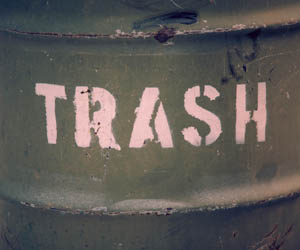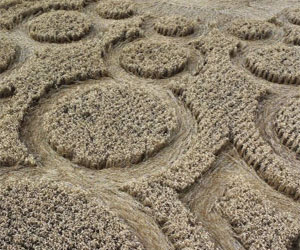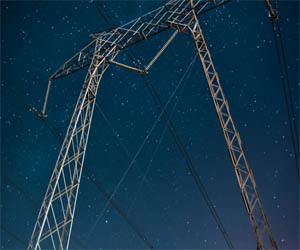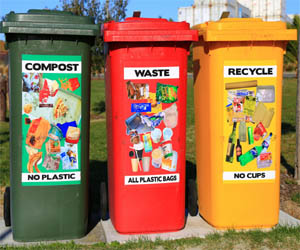


Transforming Trash Into Power

In an era marked by environmental concerns and the pressing need to reduce our carbon footprint, the concept of generating renewable energy from waste is gaining significant momentum. Waste, once considered a problem and an environmental hazard, is now being seen as a valuable resource in the pursuit of a more sustainable future. With innovative technologies and a shift in mindset, we can transform trash into power, contributing to cleaner and more sustainable energy sources.
The Waste-To-Energy Revolution
Waste-To-energy (WTE) technology is at the heart of this transformative movement. It involves harnessing the energy potential of waste materials through various processes such as incineration, gasification, and anaerobic digestion. The key idea is to extract energy, mainly in the form of electricity and heat, from waste, thus reducing the burden on traditional energy sources and mitigating the environmental impact of waste disposal.
Diverse Sources Of Waste
One of the remarkable aspects of renewable energy from waste is the diversity of waste sources that can be utilized. This includes municipal solid waste, agricultural residues, industrial by-products, and even sewage sludge. By tapping into these sources, we not only reduce the amount of waste ending up in landfills but also create opportunities to produce clean energy.
Environmental Benefits
Generating renewable energy from waste offers several notable environmental benefits. It significantly reduces the emission of greenhouse gases compared to traditional waste disposal methods. Moreover, it lessens the need for landfills, which can be detrimental to the environment, often contaminating groundwater and emitting harmful gases. WTE technology ensures a more controlled and cleaner approach to waste management.
Reducing Fossil Fuel Dependence
A fundamental advantage of renewable energy from waste is its potential to reduce our reliance on fossil fuels. As we divert waste from landfills and incinerate it to produce energy, we decrease the need for non-renewable resources. This not only cuts carbon emissions but also supports the transition to a more sustainable energy mix.
Economic And Social Benefits
The benefits of renewable energy from waste extend beyond the environmental realm. WTE facilities create jobs, stimulate local economies, and reduce the costs associated with waste disposal. Moreover, these facilities can provide a stable source of revenue by selling surplus electricity to the grid.
Challenges And Considerations
While the concept of generating renewable energy from waste is promising, it does come with its set of challenges. Concerns about emissions from incineration and the need for effective waste sorting systems are some of the common issues. Public perception and regulatory standards play a significant role in ensuring that WTE facilities operate responsibly and safely.
The transformation of waste into renewable energy is a pivotal step toward a greener and more sustainable world. It addresses the twin challenges of waste management and clean energy generation simultaneously. To fully realize the potential of renewable energy from waste, it's essential to continue investing in research, technology, and regulatory frameworks that promote responsible waste-to-energy practices, paving the way for a cleaner, more sustainable energy future.
What Your Feline Friend Is Telling You
 1. Straight Up And Quivering: When a cat's tail is held high and quivering at the tip, it's typically a sign of excitement and anticipation. Your cat may be thrilled to see you, play, or receive a treat.
1. Straight Up And Quivering: When a cat's tail is held high and quivering at the tip, it's typically a sign of excitement and anticipation. Your cat may be thrilled to see you, play, or receive a treat.
2. Puffed Up And Arched: A puffed-up tail, similar to a bottlebrush, is a classic sign of a frightened or threatened cat. It's an attempt to make themselves appear larger and more intimidating.
3. Straight Up And Fluffed: When a cat's tail is held high and fluffed, it indicates that they are feeling defensive or agitated. This often occurs when they encounter a perceived threat.
Unraveling The Mysteries In The Fields
 Formation Techniques And Precision
Formation Techniques And Precision
One of the most compelling aspects of crop circle investigations is the examination of formation techniques and precision. Researchers have discovered that while some crop circles can be easily attributed to human-made efforts using ropes and boards, others exhibit remarkable precision and intricacy that challenge conventional explanations. These formations often display geometric shapes and mathematical properties that are difficult to achieve through simple means.
Elongated Crop Nodes
An intriguing finding in some crop circle investigations is the discovery of elongated crop nodes. In some formations, the crop plants exhibit elongation of their nodes, or the points where leaves and stems connect.
 Nostradamus, a French physician and astrologer born in 1503, is often regarded as a visionary whose words continue to perplex believers and skeptics alike. His most famous work, "Les Prophéties," is a collection of enigmatic quatrains that some claim contain references to natural calamities. Although Nostradamus is not often associated directly with the prediction of specific natural disasters, his vague yet intriguing verses have been interpreted in various ways to suggest that he might have possessed insights into these catastrophic events.
Nostradamus, a French physician and astrologer born in 1503, is often regarded as a visionary whose words continue to perplex believers and skeptics alike. His most famous work, "Les Prophéties," is a collection of enigmatic quatrains that some claim contain references to natural calamities. Although Nostradamus is not often associated directly with the prediction of specific natural disasters, his vague yet intriguing verses have been interpreted in various ways to suggest that he might have possessed insights into these catastrophic events.
One of the most well-known interpretations of Nostradamus' prophecies relates to natural disasters is his supposed prediction of the Great Fire of London in 1666. In Quatrain 97 of Century 2, he wrote:
"The blood of the just will commit a fault at London,
Burnt through lightning of twenty threes the six:
The ancient lady will fall from her high place,
Several of the same sect will be killed."
 The power of suggestion in hypnosis has been harnessed for various purposes, from therapeutic applications to personal development and even entertainment. In therapeutic contexts, hypnotherapy utilizes the suggestive power of hypnosis to help individuals overcome challenges like smoking cessation, weight loss, phobias, and anxiety. By planting positive suggestions in the subconscious mind, hypnotherapists can reframe negative thought patterns and promote healthier behaviors.
The power of suggestion in hypnosis has been harnessed for various purposes, from therapeutic applications to personal development and even entertainment. In therapeutic contexts, hypnotherapy utilizes the suggestive power of hypnosis to help individuals overcome challenges like smoking cessation, weight loss, phobias, and anxiety. By planting positive suggestions in the subconscious mind, hypnotherapists can reframe negative thought patterns and promote healthier behaviors.
One of the most intriguing aspects of hypnosis is its ability to unlock hidden reservoirs of knowledge within the subconscious mind. Often, people report vivid memories and recollections while in a hypnotic state, memories that were seemingly buried in the depths of their minds. This phenomenon has been utilized in forensic psychology, where hypnosis has been used to help witnesses recall details of past events, potentially aiding criminal investigations.
The power of suggestion in hypnosis is closely tied to suggestibility, which varies from person to person. Some individuals are highly suggestible and easily enter a trance-like state, while others may require more effort to achieve the same level of suggestibility. The process of assessing and tailoring suggestions to an individual's unique needs and characteristics is a crucial skill for a hypnotist.
Moreover, the ethical considerations surrounding the power of suggestion in hypnosis cannot be understated. The potential for abuse or the implantation of false memories has raised concerns in the field. Therefore, reputable hypnotherapists adhere to strict ethical guidelines to ensure that the power of suggestion is used responsibly and ethically.






 The Importance Of Proper Litter Box Habits:
The Importance Of Proper Litter Box Habits:
Litter boxes are more than just a convenience for cat owners; they are a fundamental aspect of a cat's daily routine. Proper litter box habits are crucial for several reasons:
Hygiene: A clean litter box prevents the buildup of waste, which can lead to odors and bacterial growth. Regular cleaning is essential to maintain a hygienic environment for both your cat and your household.
Mental Health: Cats are naturally clean animals and may become stressed or anxious if their litter box is not up to their standards. Maintaining a clean box contributes to your cat's mental well-being.
Preventing Accidents: A cat that doesn't have access to a clean and properly placed litter box may resort to urinating or defecating in inappropriate places, such as on your furniture or floors.
Common Litter Box Issues:
Several common litter box issues can arise, requiring attention and intervention:
Litter Box Aversion: Cats may develop a dislike for their litter box due to factors like a dirty box, an unfavorable type of litter, or an unsuitable location.
Territorial Marking: Unneutered male cats, in particular, may mark their territory by spraying urine outside the litter box.
The Innovative World Of Waste-To-Energy Technology
 Diverse Sources Of Waste
Diverse Sources Of Waste
What makes the concept of turning trash into power so promising is the diversity of waste sources that can be utilized. It's not limited to just household waste; rather, it extends to agricultural and industrial waste streams. This versatility allows us to divert a significant portion of waste from landfills and turn it into a valuable resource.
Environmental Benefits
Waste-to-energy technology brings about a multitude of environmental benefits. Firstly, it reduces the need for landfill space, addressing the problem of limited landfill capacity. Landfills are notorious for releasing greenhouse gases and contaminating the environment, which can be mitigated through the use of WTE facilities. Moreover, the incineration process in these facilities is carefully controlled to minimize harmful emissions, contributing to cleaner air and a decrease in greenhouse gas emissions.
Reducing Fossil Fuel Dependency
One of the significant advantages of turning trash into power is its potential to reduce our dependence on fossil fuels. By utilizing waste materials as a source of energy, we decrease the demand for non-renewable resources. This transition aligns with the global push for a more sustainable energy mix and aids in reducing carbon emissions.
Economic And Social Benefits
Beyond environmental advantages, waste-to-energy initiatives bring economic and social benefits to communities. These facilities create jobs, stimulate local economies, and provide a stable source of revenue through the sale of surplus electricity to the grid. This not only fosters economic growth but also enhances the sustainability of waste management practices.
Challenges And Considerations
While the concept of turning trash into power is promising, it faces challenges such as public perception and concerns about emissions from incineration. It is essential to implement stringent regulations, advanced emission control technologies, and effective waste sorting systems to ensure that WtE facilities operate responsibly and safely.